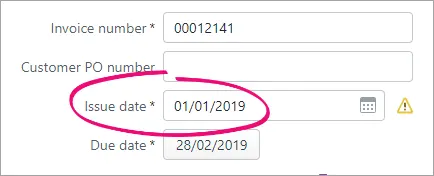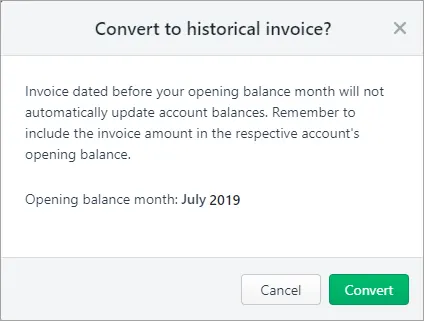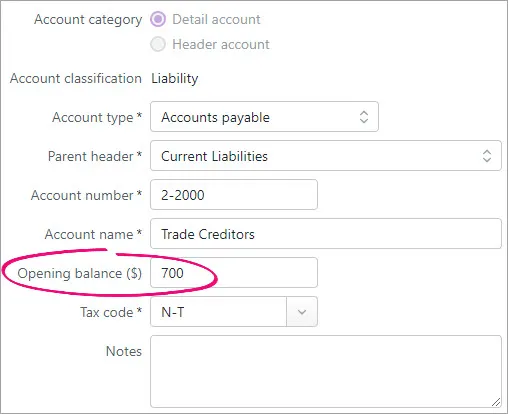If you have unpaid invoices or bills at the time you start using MYOB, these are called historical transactions. You'll need to enter these transactions into MYOB so when they're paid you'll be able to apply the payment to the right invoice or bill.
Because historical transactions were created before you started using MYOB, their value won't have been included in the opening balances of your trade creditors or trade debtors accounts (the accounts which track the money you and your customers owe). This means when you enter a historical transaction, you'll also need to update the opening balances of these accounts to include the value of the historical transactions.
When you enter a historical transaction, you'll see a prompt that reminds you to include the transaction amount in your account opening balances.
1. Enter historical sales and purchases
You can enter your historical sales and purchases just like any other sale or purchase. The only difference is that the transaction date you enter will be before your Opening balance date (the date you started using MYOB defined in your business settings).
Depending on how many historical transactions you need to enter, and how you want to track them, you can either:
create an individual invoice or bill for each historical sale or purchase, or
create a single invoice or bill for each customer or supplier, for the total amount owing.
To enter a historical transaction:
Create a new invoice or bill (as applicable).
To enter a historical sale, go to the Sales menu and choose Create invoice. See Creating invoices for more information.
To enter historical purchases, go to the Purchases menu and choose Create bill. See Creating bills for more information.
Choose the Customer or Supplier.
For the Issue date, enter or choose the original transaction date. For example, if you originally recorded an invoice on 1 January last year, enter this as the transaction date.

If the Issue date is before MYOB's Opening balance date, the transaction will be identified as historical and a message like this will appear:
The message also reminds you to include the transaction amount in your account opening balances, which we explain in the next task.Click Convert to the above message to continue entering the transaction.

Enter the transaction details and click Save. Note that you can't change the Account the transaction lines are allocated to.
Once you've entered these historical sales and purchases, you'll see them on your Invoices or Bills pages, along with the rest of your invoices and bills. Just make sure the date range goes back far enough to show your historical invoices and bills.
You can apply partial or full payments against these transactions in the same way as any other payment. For more information, see Customer payments and Entering payments made to suppliers.
2. Include unpaid invoices and purchases in opening balances
The opening balances of your of your Trade Debtors (accounts receivable) and Trade Creditors (accounts payable) accounts should equal the amount owing on historical sales and purchases.
For example, if you have two unpaid historical invoices, one for $700 and another for $300, you have $1000 worth of historical sales. This means the opening balance of your Trade Debtors (accounts receivable) account should be $1000.00.
Likewise, if you have three unpaid bills, for $100, $200 and $400, you have $700 worth of historical purchases. This means the opening balance of your Trade Creditors (accounts payable) account should be $700.
To check or update your opening balances
Go to the Accounting menu and choose Chart of accounts.
Click to open your Trade Debtors (accounts receivable) account.
Check the Opening balance and change it if required. This should equal the value of historical sales.

Click Save.
Click to open your Trade Creditors (accounts payable) account.
Check the Opening balance and change it if required. This should equal the value of historical purchases.

Click Save.
Customers or suppliers with an opening credit balance
If you're setting up a customer or supplier who has a credit balance, enter the contact's details then create a customer return or supplier return to record their credit balance. When creating the return you'll need to enter the Allocate to account. This account will be specific to your business, so check with your accounting advisor if unsure.